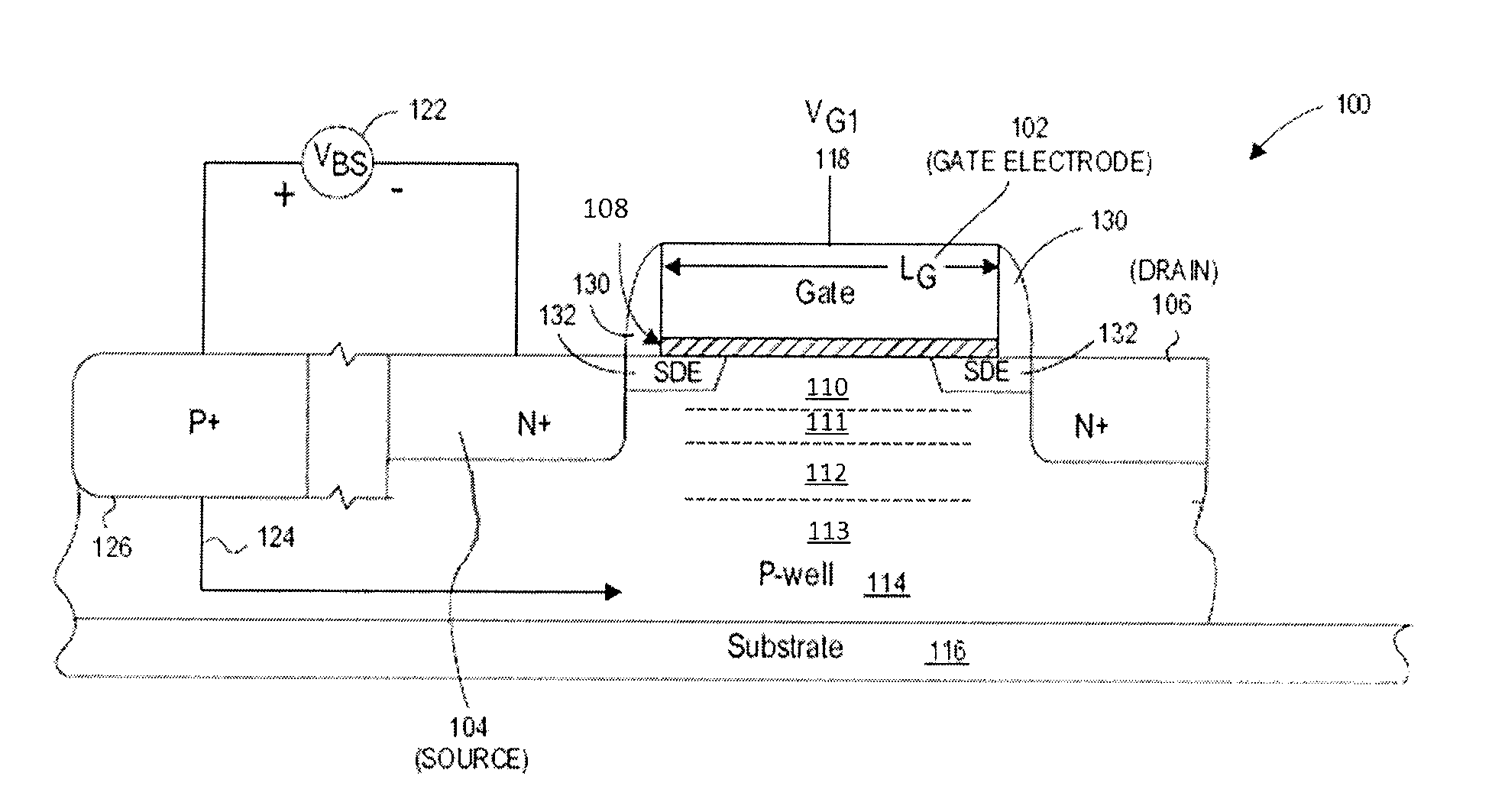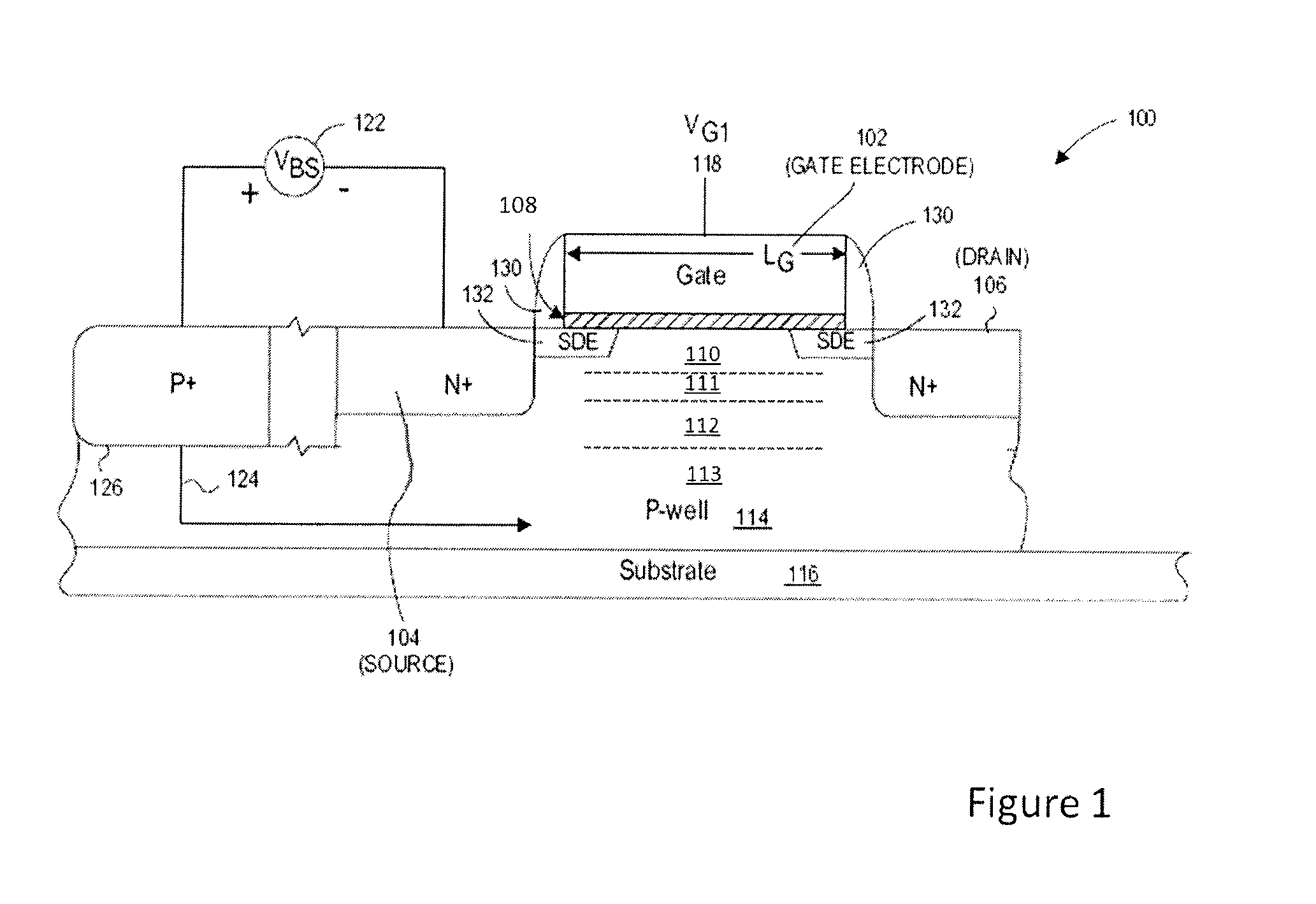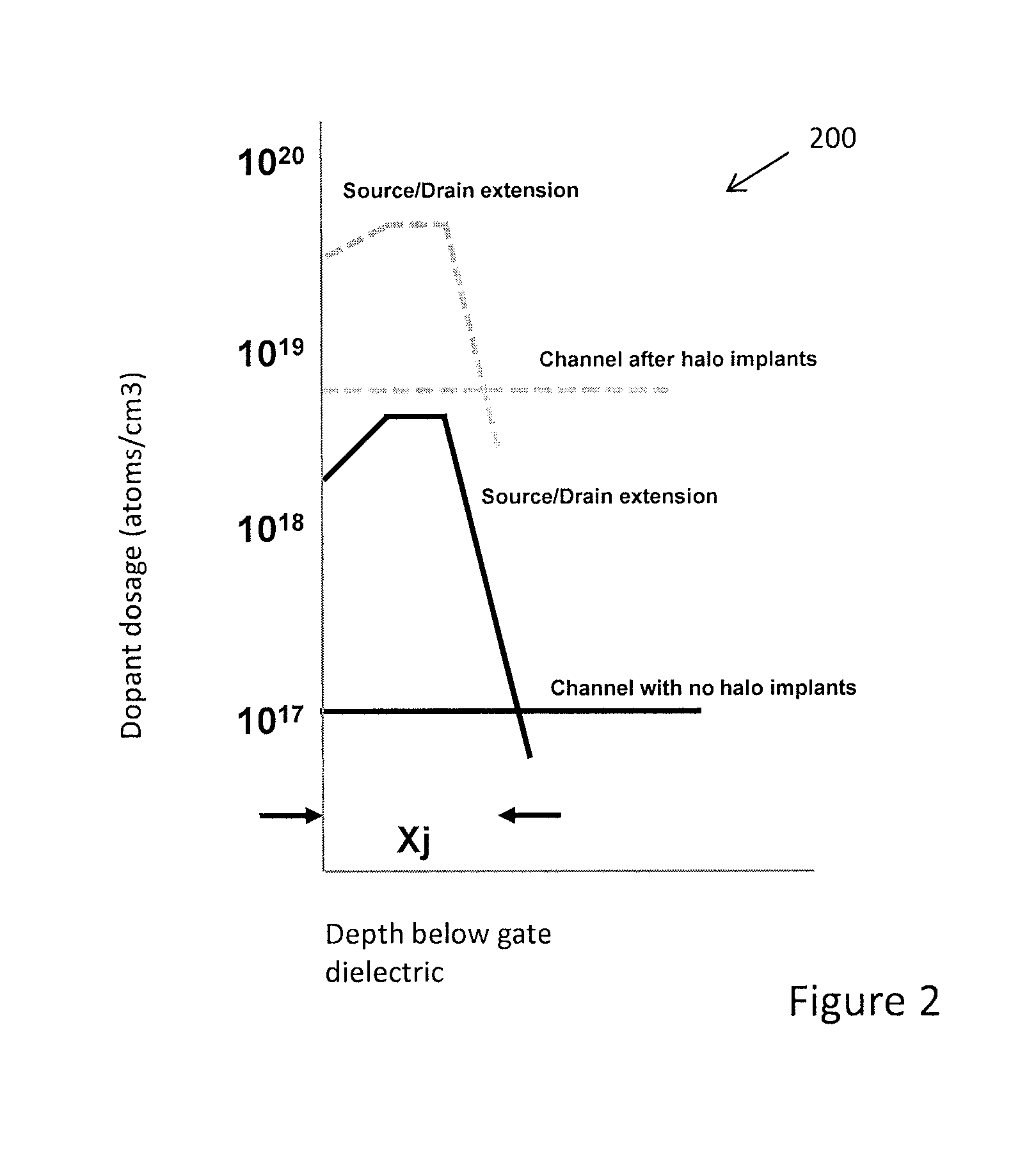Source/drain extension control for advanced transistors
a technology of advanced transistors and source/drain extension, which is applied in the direction of transistors, semiconductor devices, electrical apparatus, etc., can solve the problems of reducing threshold voltage, reducing electron mobility, and not always being able to achieve simple proportional shrinkag
- Summary
- Abstract
- Description
- Claims
- Application Information
AI Technical Summary
Benefits of technology
Problems solved by technology
Method used
Image
Examples
Embodiment Construction
[0014]An improved transistor manufacturable on bulk CMOS substrates is seen in FIG. 1. A Field Effect Transistor (FET) 100 is configured to have greatly reduced short channel effects and decreased variation in threshold voltage due, in part, to minimization of channel dopants. The FET 100 includes a gate electrode 102, source 104, drain 106, and a gate dielectric 108 positioned over a channel 110. In operation, the channel 110 is deeply depleted, forming what can be described as deeply depleted channel (DDC) as compared to conventional transistors, with depletion depth set in part by a highly doped screening region 112. While the channel 110 is substantially undoped, and positioned as illustrated above a highly doped screening region 112, it may include simple or complex layering with different dopant concentrations. This doped layering can include a threshold voltage set region 111 with a dopant concentration less than screening region 112, optionally positioned between the gate di...
PUM
 Login to View More
Login to View More Abstract
Description
Claims
Application Information
 Login to View More
Login to View More - R&D
- Intellectual Property
- Life Sciences
- Materials
- Tech Scout
- Unparalleled Data Quality
- Higher Quality Content
- 60% Fewer Hallucinations
Browse by: Latest US Patents, China's latest patents, Technical Efficacy Thesaurus, Application Domain, Technology Topic, Popular Technical Reports.
© 2025 PatSnap. All rights reserved.Legal|Privacy policy|Modern Slavery Act Transparency Statement|Sitemap|About US| Contact US: help@patsnap.com



